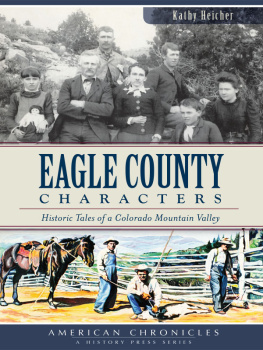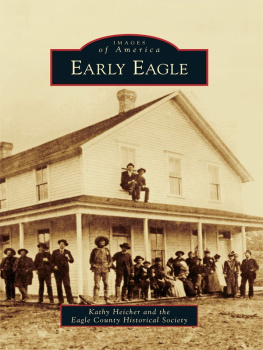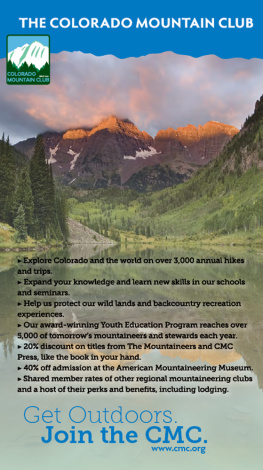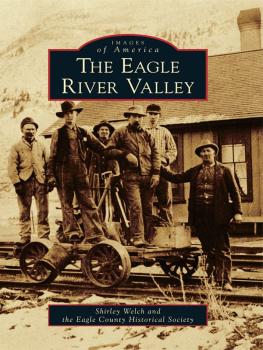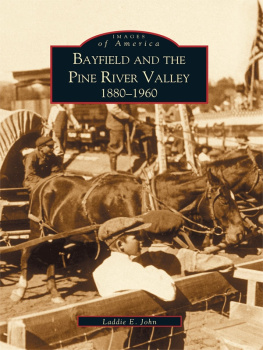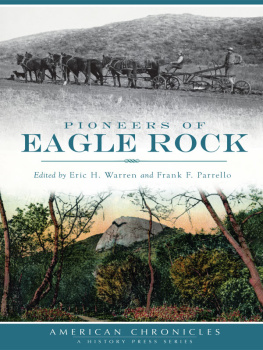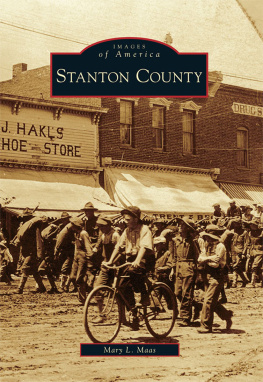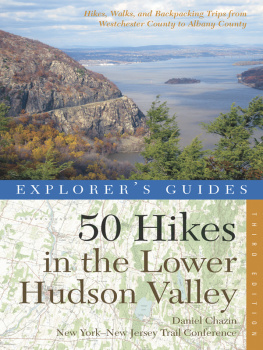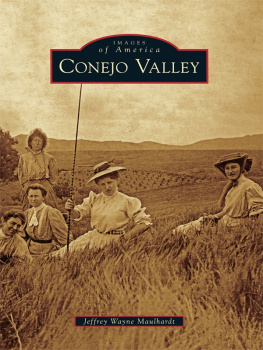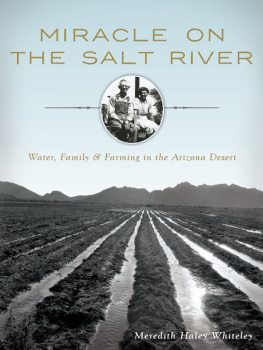
Published by The History Press
Charleston, SC 29403
www.historypress.net
Copyright 2013 by Kathy Heicher and the Eagle County Historical Society
All rights reserved
Front cover, top: The Buchholz family. Bottom: Rolland, Ellis and Roy Bearden rope a calf at their Squaw Creek ranch..
First published 2013
e-book edition 2013
Manufactured in the United States
ISBN 978.1.61423.950.5
Library of Congress Cataloging-in-Publication Data
Heicher, Kathy, 1950
Eagle County characters : historic tales of a Colorado mountain valley / Kathy Heicher and the Eagle County Historical Society.
pages cm
Includes bibliographical references.
print edition ISBN 978-1-60949-697-5
1. Eagle County (Colo.)--History--Anecdotes. 2. Eagle County (Colo.)--Biography--Anecdotes. 3. Pioneers--Colorado--Eagle County--Biography--Anecdotes. 4. Frontier and pioneer life--Colorado--Eagle County--Anecdotes. 5. Eagle County (Colo.)--Social life and customs--Anecdotes. I. Eagle County Historical Society (Colo.) II. Title.
F782.E15H45 2013 978.844--dc23
2013018552
Notice: The information in this book is true and complete to the best of our knowledge. It is offered without guarantee on the part of the author or The History Press. The author and The History Press disclaim all liability in connection with the use of this book.
All rights reserved. No part of this book may be reproduced or transmitted in any form whatsoever without prior written permission from the publisher except in the case of brief quotations embodied in critical articles and reviews.
To Bill, Scott and Brett, my Eagle County characters.

Eagle County pioneers map. Drawn by Jack Niswanger and labeled by Amanda Swanson.
Contents
Acknowledgements
It takes a community to produce a history book. This volume proves that statement.
My utmost thanks go to longtime local artists Mark Lemon and Jack Niswanger, who generously shared their work and artistic talent. Graphic artist Amanda Swanson used her considerable computer skills to pull the map together.
Edith Lederhause, Starr Doll, Buddy Doll, John Buchholz and Gene Slaughter shared their family photographs, patiently proofread draft chapters and straightened me out when I had their ancestors a bit tangled up. Art Davenport shared a very well-written historical account of John Roots life that he had produced while a high school student in 1940.
Jaci Spuhler, archivist for the Eagle Valley Library District, pointed me in the direction of the Sarah Doherty chapter. She also cheerfully complied with my numerous requests for one more photo. Jaci and my husband, Bill, proved to be a wonderful tag-team proofreading duo.
The staff at the Eagle Public Library consistently gave me a friendly reception on my endless trips to the archives. The Eagle County Historical Society was also very supportive. Thanks, also, to my friends who broke up the somewhat lonely process of book writing with invitations for hikes, snowshoe outings, quilting and other fun stuff.
Introduction
When I first proposed Eagle County Characters to the publishers in February 2012, I envisioned a book featuring profiles of twenty pioneers of Eagle County. However, as I was drawn deeper into the research of my selected characters, I quickly realized that my ambitions exceeded the publishers word allowance. I reduced the number of chapters to ten. Many wonderful pioneer stories remain to be told.
These brave men and women who carved a county out of wilderness deserve much more in the telling of their stories than one or two brief anecdotes. They lived truly extraordinary lives but did not realize it at the time. They were just doing what was necessary to pioneer this mountain country. Hopefully, the stories contained in this book will help todays readers understand the greatness of a few of these early residents. Eagle County would not be what it is today without them.
One pioneer on whom I relied heavily in my research was editor O.W. Daggett, publisher of the Holy Cross Trail newspaper based in Red Cliff. In the 1920s and 1930s, he wrote a series of stories about pioneers. Daggett no doubt embellished his narratives, romanticizing the Old West. But still, the tales are fascinating, and I share his affection for those spirited early residents of the county. When the series ran in the Holy Cross Trail, the newspaper circulation notably increased.
Daggett could have been speaking for me when he wrote about his pioneer story series in 1925:
You will get the best we have. We may take some liberties with the English language, but do not censure us for that, as we do not know any better; it is the thought that we are after, and if you get half the kick out of reading the stories as we do in writing them, we feel that our efforts are not in vain.
O.W. Daggett
Holy Cross Trail
June 13, 1925
Chapter One
Root and Marks
The Squaw Men Who Came to Stay
Eagle Countys pioneer history is rich with stories of daring miners, eager entrepreneurs and hardworking homesteaders. But John Root and Hiram Marks were not driven by any of those ambitions.
These mountain men arrived in the county well ahead of the 1880s rush of pioneers, bringing with them an incredible background story.
They came west as young men, seeking adventure in the original 1859 gold rush in Colorado. They certainly found that adventure. By the time they reached Eagle County, they had been taken hostage by the Ute Indians and roamed throughout the Ute territory for over twenty years. Root and Marks ultimately found their version of a mountain paradise in the Red Dirt Creek drainage near the Grand (Colorado) River in northwestern Eagle County.
Both men had only meager educations but were intelligent and wise in the ways of pioneer survival. Root and Marks were known for their excellent memories and their storytelling abilities, particularly involving lore handed down by the Utes and other tribes. The stories these mountain men shared with their friends are the foundation of Eagle Countys history. There is no known photographic evidence of their existence, although John Roots name is scrawled on the wall of a cave near Sweetwater Lake. The two men were inextricably linked to each other. There are many references in the archives to Root and Marks but almost no references to the men individually. Their first names were used only in their obituaries.

Mountain man. Drawing courtesy of Jack Niswanger.
WESTWARD, HO!
O.W. Daggett, a prolific pioneer newspaper editor and one-time publisher of the Holy Cross Trail newspaper, wrote much of the story of Root and Marks. Some of Roots story is also captured in a manuscript written by Gypsum resident Arthur Davenport in 1940 as a school project.
The two men were in their early twenties when they were drawn west by the Colorado gold rush. Root was working his fathers farm in Iowa and was eager to get away from that hard life. When he saw a wagon train preparing to head west, he talked his way into the trip, working as a horse wrangler. Another young man, Marks, a little bit older than Root, was also wrangling horses for the wagon train. Like many of the westward-bound pioneers, they left from St. Joseph, Missouri, crossing the plains with ox teams and wagons. According to Daggett, the group encountered numerous bands of Native Americans but initially had no issues with the peaceful tribes.
Next page
